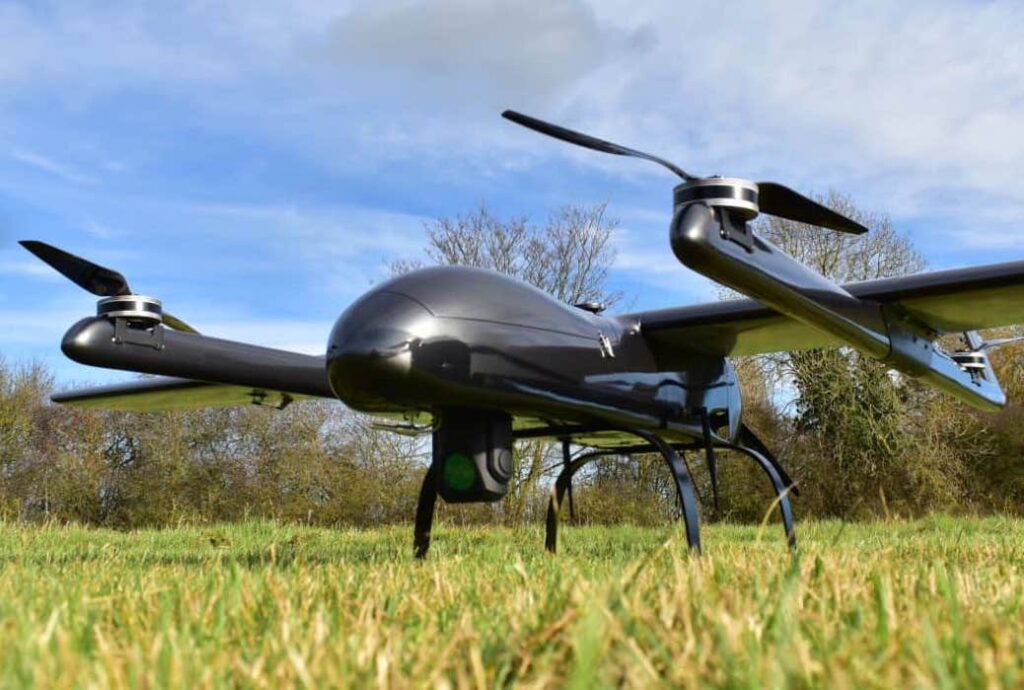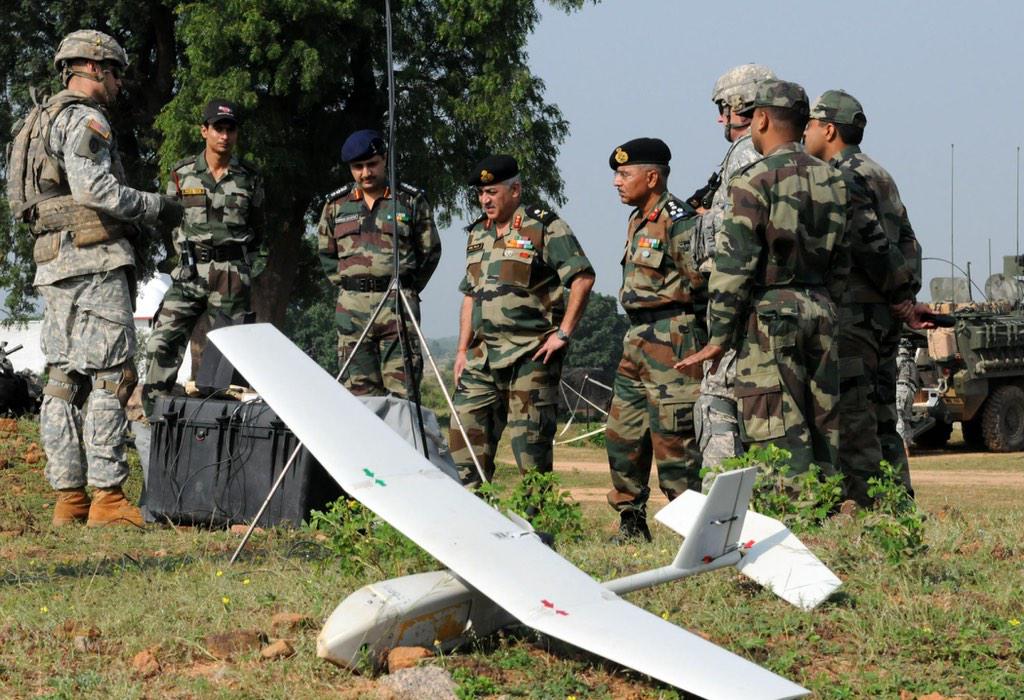Drones, often referred to as Unmanned Aerial Vehicles (UAVs), Miniature Pilotless Aircraft, or Flying Mini Robots, are quickly gaining ground and are being employed by both state-sponsored and non-state organisations as the weapon of choice in modern warfare. A growing number of people now believe drones to be essential because of their high degree of effectiveness, low cost, and low visibility. In terms of widespread adoption and utilisation, drones are still in their infancy, yet they have already overturned established barriers in fields that were previously seen as impervious to similar technological developments. Over the past several years, drones have become essential to the operation of various businesses and governmental organisations, breaking through areas like industrial, defence, oil and gas, search and rescue, etc. that were either at a standstill or lagging behind.
Military today is drone heavy in their operations
Drones are often divided into three categories: fixed-wing, rotary-wing, and hybrid VTOLs (Combination of fixed and rotary wing Vertical Take-off Landing). The size (nano, micro, small, medium, and big), weight, flying qualities, kind of energy source, and other factors are also used to categorise them.

Fixed wing(top left), Multi-rotor(top right) and Hybrid VTOL(bottom) drones
- Fixed wing UAV: Due to its attributes like fast speed, fuel consumption, flying altitude, and significantly better payload capacities, fixed wing UAV systems, which are already operational in top defence forces globally, are employed for long distance missions.
- Rotor UAV: Rotor UAVs are increasingly being used in homeland security and military applications because of their special capacity to take off and land vertically from a highly constrained and compact environment. These drones are perfect for ISR, border surveys, small-cargo delivery, and search and rescue missions because of their capacity to hover for extended periods of time. Read more about how drones are aiding in search and rescue operations.
- Hybrid VTOL: This kind of drone can hover and fly around in heli-mode, take off and land like helicopters, and transition to fixed wing and fly at speeds faster than helicopters.
The applications of drones are ever increasing and some of the most common ones are border patrol, law enforcement, and long-distance ISR, target systems that self-destruct, drones with short range weapons for battle, swarm operations for both offensive and defensive purposes, system for network connection, disaster and emergency management rescue and search missions, rapid aerial firefighting system, shipment and delivery in a hurry, surveillance around the perimeter and safety checks, mapping and geographic surveying of difficult terrain, and hurricane & tornado tracking and forecasting.
Drones in the defence ecosystem
Today, drones are a crucial component of armed forces all over the world, used for a variety of purposes including target decoys, combat operations, research, and development. Recent predictions indicate that the key growth driver for drones in the upcoming years will continue to be military spending. Unmanned forecasts predict that by 2022, global military spending on drones would have surpassed $70 billion, and that these drones will replace human pilots in many future conflicts. Military funding also tends to be higher, with a single US Predator drone costing about $4 million and an estimated $2.4 billion for the entire programme. Let us look into the drones that serve their purpose in the defence ecosystem and what they bring to the table.
Heavy Payload Drones
Our country’s northern and eastern boundaries are exceedingly unfriendly and severe, with elevations between 5000 and 20,000 feet, intense winter snowfall, the existence of glaciers, and perilous mountain ranges. Transporting vital supplies like gasoline, food, medical kits, and ammunition from base depots to the forward posts is the Indian Army’s most pressing problem at high altitudes. The hauling of a 50KG load may sometimes need a whole day. In hostile circumstances, this problem is even worse. Such delays in the delivery of necessities might lead to casualties at the advanced positions. The Indian Army currently uses human-guided mules to manage this everyday logistics, while helicopters are used to transfer critical big loads. Due to the difficult terrain and poor weather, everyday mule-based transportation often takes 8 to 10 hours for a routine delivery and poses a serious risk to both human and animal life. Due to the delayed supply of ammunition and other supplies, the strategy might potentially result in significant losses during a fight.
The operational goal of the Heavy Payload Logistics Drone System is to totally automate payload delivery, which does away with the requirement for workers to move cargo through difficult high-altitude terrain.
Stealth Drones
For ISTAR(Intelligence surveillance target acquisition and reconnaissance) and other tactical operations across the world, military, special forces, and border security personnel employ drones. Drone detection and neutralisation technologies have recently been developed in response to the growing threat posed by drones. Stealth entails cunning. When you act stealthily, you do it carefully and silently so that no one observes. Nano & Micro Drones are cutting-edge, inventive machines that can do a lot with a little space, and they are swiftly emerging as a crucial military tool. Drones that are stealthy may avoid radar and avoid being seen by people. These ultra-compact aerial reconnaissance devices provide field operators with reliable eyes in the sky in any situation thanks to cutting-edge technology that lessens reflection and emission of Infrared, visible light, radio frequency spectrum, and audio waves. A few centimetres and grams in size and weight, stealth drones come with both day and night cameras. The average flight time is 25 to 40 minutes, and the maximum operational range is around 5 kilometres.
Armed drones
In the past ten years, there has been a noticeable increase in the use, development, and spread of armed drones. Because these unmanned, remote-controlled aircraft can fly over extended periods of time, cost very little, and can be deployed without putting the pilot at danger, armed forces and non-state actors have come to rely on them more and more. Outside of regions of armed conflict, drones became well-known for their use in targeted killing operations. Such usage has been marked by little transparency and a lack of responsibility for the nations using them, and it has resulted in significant numbers of civilian fatalities. The conflict between Russia and Ukraine has revealed the first drone war in its entirety. Numerous drone pilots were hired by Ukraine to fly over Russian territory and provide back aerial photos of the adversary’s territories. Then, this data is analysed using AI and machine learning algorithms to spot Russian disguised cars and further analyse any geographic inconsistencies, such as uneven grass or texture. Read more about how drones are being used in the Ukraine war.
Mine Detection and Detonation Drones
The Mine Detection Drones, which are now on the market, are equipped with a variety of sensors, including ground-penetrating radar, metal detectors, magnetometers, and explosive detectors, among others, to examine a specified vast area and identify any suspected landmines on a map. Mine Detection Drones analyse and gather exact location data using a variety of data fusion methods and vision analytics. Depending on the circumstance, once the mines are identified and pinpointed on the map, they are either manually disarmed or exploded by dropping thermite sticks or timed de-mining explosives. Mine detection and detonation using drones is anticipated to be 40 times more affordable and 10 times faster than current manual techniques.
Tethered drones
While multi-rotor drones have a lot of uses in defence, one restriction is their limited endurance, which lasts no longer than 60 minutes. For continuous power supply to the drone and its payloads in tethered drone systems, the ground station is often wired to raw electricity or a generator. To ensure uninterrupted operation for hours, leading tethered systems are coupled with smart power management and intelligent tether winding mechanisms. These systems employ the global navigation satellite system (GNSS) to keep the drone’s position and flight ceiling constant despite adverse weather. These systems’ ability to transmit secure, real-time, high-resolution data to users is one of its main benefits. As they can stay in the air for more than 10 hours, tethered drone systems are perfect for rapid communication networks to be established in hilly locations, perimeter surveillance, border surveillance, and monitoring of military advance posts.
Endless possibilities of drones with AI
AI is used for object detection, categorization, picture augmentation, and stitching in today’s most efficient and useful drone applications. Even if it falls well short of AI’s true potential, this has a big impact on automating and expanding a variety of applications at a cheaper cost. Drones can recognise items on the ground thanks to AI, which also allows them to assess, analyse, and collect data to be delivered to a ground station. The drones are able to extract important information from the data collected by various sensors thanks to high-performance onboard image processing engines driven by AI and computer vision algorithms. While in operation, complex neural networks continue to train autonomously, improving capacities for detection, analysis, and interpretation. Read more about drone analytics.
Autonomous weapon system
Drones equipped with autonomous weapon systems can recognise enemies or anticipate threats. The system may automatically start shooting when a danger has been identified and queued, or it may depend on a human-in-the-loop to make the decision. The employment of UAVs to increase the combat capability of fighter planes is a significant advance in this field. Consider a fighter jet that is synchronised with several unmanned aerial vehicles (UAVs), increasing its range and lethality from a single aircraft to a small army of numerous units, all working together to complete a single mission under the pilot of the fighter jet.
Swarm drones
Networked drone swarms, in which drones in the flock communicate, work together, and self-organise into a coherent swarm, flying in unison without colliding, are another key result of incorporating AI in UAVs. A swarm of drones, for instance, may scan a wide border frontline to look for signs of enemy activity. Each drone measures its own location and velocity and shares the information with the other drones in the swarm rather than flying along a pre-programmed course and maintaining a pre-programmed position. This enables them to manoeuvre past obstacles, avoid enemy fire, and investigate areas where the enemy is heavily present. Loitering munition drones can even be programmed to kill targets without human interaction and are difficult to detect on radar. These AI-enabled drones, often referred to as loitering munitions, linger around the target area for a while, look for the target, and then attack when it is found. When used against hidden or covert targets, loitering munitions allow for quicker reaction times. These skilled drones, which are relatively less expensive, can take the role of expensive platforms as they approach a target and can also be promptly withdrawn if the operation is abandoned. Read more about Swarm drones.
Drones are the future of defence
The most advanced defence technologies and cutting-edge weaponry are already being implemented by militaries all around the world. The use of tactical UAVs in ISR, warfare, and supplies delivery is growing. They are all prepared to take the place of humans as the primary combatants, and future human-machine cooperation will increase significantly. Future advancements in the field might be disruptive as UAVs become more autonomous and efficient, giving them the ability to make critical air superiority choices during conflict. Drone swarms, which are regarded as the future of robotic warfare, are actively being invested in by armed forces worldwide. AI, computer vision, and deep neural algorithms advancements will enhance the stealth and deadly capabilities of these airborne vehicles while also giving them total combat autonomy.

